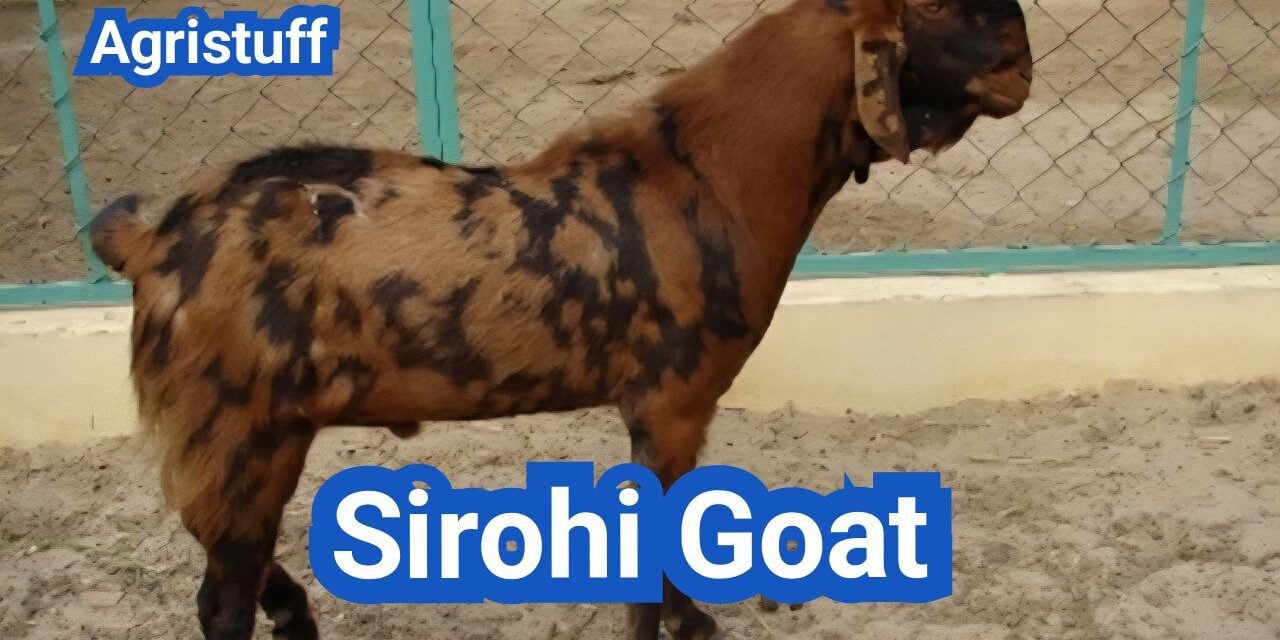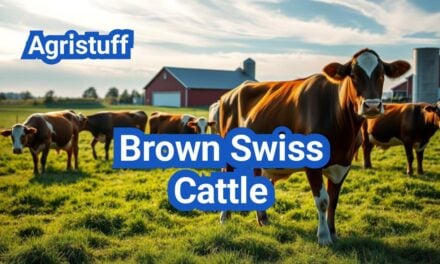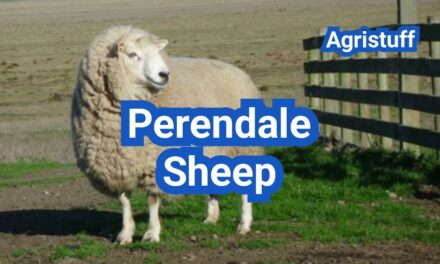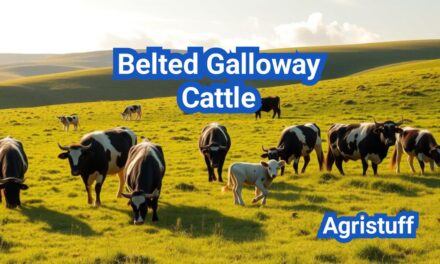The Sirohi breed has its roots in the Sirohi District of Rajasthan, India, where it has been reared for its meat and milk production. This dual-purpose breed is well adapted to the dry tropical climate of Rajasthan.
The Sirohi breed has gained popularity both in India and internationally due to its high-quality yields and adaptability to harsh climates. Farmers appreciate its weight gain, lactation performance, and resistance to major diseases.
Key Takeaways
- Originates from Sirohi District, Rajasthan, India.
- Dual-purpose breed for meat and milk production.
- Adaptable to dry tropical climates.
- Known for weight gain and lactation performance.
- Resistant to major diseases.
The Sirohi Goat Breed Profile
Sirohi goats are highly valued for their robust build, high milk yield, and excellent meat quality, making them a preferred choice for many goat farmers. The breed’s medium to large size, compact frame, and strong legs make it well-suited for various farming conditions.
What Makes Sirohi Goats Unique
Sirohi goats are distinguished by their well-developed muscles, particularly in the hindquarters, which provide strength and agility. Their medium-sized, drooping ears and short horns that curve backward are distinctive features. The breed’s coat color varies, with prominent colors being brown and spotted brown.
Key characteristics of Sirohi goats include:
- Compact body structure
- Strong legs for excellent support
- Medium-sized, drooping ears
- Short, backward-curving horns
- Varied coat colors, primarily brown and spotted brown
Economic Importance as a Dual-Purpose Breed
The Sirohi goat breed is economically significant due to its dual-purpose nature, providing both high-quality milk and meat. This versatility makes it an attractive option for farmers seeking to diversify their products and maximize income.
The adaptability of Sirohi goats to various climates and environments further enhances their economic viability, allowing farmers to raise them in different regions without compromising productivity. As a result, the Sirohi goat breed plays a crucial role in supporting the livelihoods of many farmers and contributing to the overall goat farming industry.
History and Origin of the Sirohi Goat

The Sirohi goat breed has a rich history that originated in the Sirohi District of Rajasthan, India. This breed has been developed over time by local pastoral communities through selective breeding practices to enhance its milk and meat production capabilities.
Native Region: Sirohi District of Rajasthan
The Sirohi goat is native to the Sirohi District in southern Rajasthan. The breed’s development is closely linked to the geographical and climatic conditions of this region. The harsh climate and rugged terrain have contributed to the breed’s hardiness and adaptability.
The range of the Sirohi goat extends southward into the neighboring Palanpur District of Gujarat, indicating its ability to thrive in adjacent regions with similar climatic conditions.
Development and Distribution in India
Over time, the Sirohi goat gained popularity in various regions of India due to its dual-purpose utility for both milk and meat production. The breed has been distributed across different states, where it has been appreciated for its productivity and resilience.
The Sirohi goat’s adaptability to different environments has made it a sought-after choice for goat farmers across India. Its presence is notable in regions with challenging climatic conditions, where other breeds might struggle to survive.
Introduction to Other Countries
The Sirohi goat has been introduced to other countries, where its hardiness and productivity have made it a valuable asset for local farmers. The breed’s ability to adapt to new environments has facilitated its global distribution.
As a result, the Sirohi goat has become recognized internationally for its potential in improving local goat breeds and contributing to the livestock economy.
Physical Characteristics of Sirohi Goats
Sirohi goats are recognized for their medium to large size and sturdy build. These physical characteristics make them well-suited for both meat and milk production. The breed’s robust attributes are a key factor in their popularity among farmers.
Size, Weight, and Body Structure
Sirohi goats are characterized by their compact body structure and well-developed muscles, particularly in the hindquarters. Males typically weigh around 50 kg, while females weigh approximately 23 kg. In terms of height, males can reach up to 86 cm, with females averaging around 68 cm. Their sturdy build and muscular structure contribute to their ability to thrive in various environments.
Coat Color and Distinctive Features
The coat color of Sirohi goats varies, with brown and spotted brown being prominent colors. This variation in coat color is one of the breed’s distinctive features. The coat is typically short and dense, providing protection against different climatic conditions.
Differences Between Males and Females
There are notable differences between male and female Sirohi goats. Males are generally larger and heavier than females, with a more pronounced muscular build. Females, while smaller, are known for their fertility and milk production capabilities. Understanding these differences is crucial for effective breeding and management practices.
In conclusion, the physical characteristics of Sirohi goats, including their size, weight, body structure, and coat color, make them a valuable breed for farmers. Their robust build and adaptability contribute to their suitability for both meat and milk production.
How to Identify Pure Sirohi Goats

To ensure you’re getting a pure Sirohi goat, it’s crucial to know the breed standards. The Sirohi goat breed is recognized by its unique characteristics, which distinguish it from other breeds and crossbred goats.
Breed Standards and Ideal Traits
Pure Sirohi goats are known for their distinctive features, including their coat color, body structure, and horn shape. Typically, a purebred Sirohi goat has a brown or spotted brown coat. Their body is compact and well-built, with a characteristic short, backward-curving horn shape.
Ideal traits for pure Sirohi goats include:
- A compact, medium-sized body
- Brown or spotted brown coat color
- Short, backward-curving horns
- A robust and healthy appearance
Common Traits of Crossbred Sirohi Goats
Crossbred Sirohi goats may exhibit variations in the breed characteristics. These can include differences in coat color, horn shape, and body size. While crossbred goats can still be valuable for farming, they may not meet the breed standards for pure Sirohi goats.
Common variations in crossbred Sirohi goats:
- Different coat colors or patterns
- Variations in horn shape or size
- Changes in body structure or size
Points to Check Before Purchasing
Before purchasing Sirohi goats, it’s essential to inspect the animals carefully to ensure they meet the breed standards. Checking the coat color, horn shape, and body structure can help identify purebred animals.
Key points to check:
- Coat color and pattern
- Horn shape and size
- Body structure and size
- Overall health and condition
Advantages and Disadvantages of Raising Sirohi Goats
Farmers are increasingly turning to Sirohi goats due to their resilience and potential for both meat and milk production. This breed offers several advantages that make it an attractive choice for farmers. However, like any other livestock, raising Sirohi goats also comes with its set of challenges.
Benefits of the Sirohi Breed
The Sirohi goat breed is renowned for its hardiness and adaptability, making it suitable for various farming conditions. Some of the key benefits include:
- High Productivity: Sirohi goats are known for their high milk yield and meat production, making them a valuable asset for farmers.
- Adaptability: They can thrive in different climatic conditions, from hot to temperate regions.
- Disease Resistance: Sirohi goats have a natural resistance to certain diseases, reducing the need for extensive veterinary care.
- Dual-Purpose Utility: They are suitable for both milk and meat production, providing farmers with multiple revenue streams.
Challenges and Limitations
While Sirohi goats offer numerous benefits, there are also challenges associated with raising them. Some of these include:
- Disease Management: Despite their natural resistance, Sirohi goats can be susceptible to certain health issues if not properly managed.
- Market Fluctuations: The demand and price for goat milk and meat can fluctuate, affecting the profitability of Sirohi goat farming.
- Nutritional Requirements: Sirohi goats require a balanced diet to maintain their productivity, which can be a challenge in areas with limited feed resources.
- Initial Investment: Setting up a Sirohi goat farm requires a significant initial investment in infrastructure, breeding stock, and equipment.
By understanding both the advantages and disadvantages of raising Sirohi goats, farmers can make informed decisions and implement effective management practices to maximize their returns.
How to Set Up a Sirohi Goat Farm
Creating a Sirohi goat farm from scratch demands a comprehensive approach, involving careful planning, strategic decision-making, and a thorough understanding of the specific needs of these versatile animals.
Step 1: Planning Your Farm Layout
The first step in establishing a Sirohi goat farm is to plan the layout efficiently. This involves designing the farm to accommodate the goats’ needs, including adequate space for grazing and movement. The layout should also consider the placement of feeding areas, water sources, and shelter. A well-planned farm layout is crucial for the health and productivity of the goats.
Step 2: Acquiring Essential Equipment
Once the farm layout is planned, the next step is to acquire the necessary equipment. This includes fencing to secure the perimeter and prevent escape or predation, feeding troughs designed to minimize waste, and veterinary supplies for health management. Investing in quality equipment is vital for the long-term success of the farm.
Step 3: Calculating Initial Investment
Calculating the initial investment is a critical step in setting up a Sirohi goat farm. This involves estimating costs for land preparation, equipment, initial stock of goats, and other expenses. A detailed financial plan will help farmers understand the financial commitment required and make informed decisions.
Step 4: Legal Requirements in the U.S.
Farmers must also comply with legal requirements and regulations in their region. In the United States, this may include obtaining necessary permits, adhering to animal welfare standards, and complying with environmental regulations. Understanding and meeting these legal obligations is essential for the legitimacy and sustainability of the farm.
Housing and Management for Sirohi Goats

Sirohi goats need well-designed shelters to protect them from extreme weather conditions. Providing suitable housing and management practices is essential for the health and productivity of Sirohi goats.
Designing Climate-Appropriate Shelters
Shelters for Sirohi goats should be designed to protect them from harsh weather conditions, including extreme temperatures, rainfall, and sunlight. Adequate ventilation is crucial to prevent the buildup of ammonia from manure and to maintain a healthy environment. The shelters should be constructed with materials that are locally available and cost-effective, such as wood, bamboo, or metal.
The roof should be sloping to allow rainwater to run off, and the floor should be raised to prevent waterlogging. In hot climates, shelters can be designed with thatched roofs or shading materials to reduce the temperature inside.
Space Requirements Per Animal
Adequate space is necessary to ensure the health and productivity of Sirohi goats. The recommended space per animal varies depending on the age and size of the goats. Generally, a minimum of 5-7 square feet per goat is recommended for indoor housing.
- Adult goats require more space for movement and feeding.
- Kids require less space but need adequate room for growth and development.
- Adequate feeding and watering space should be provided to prevent competition among the goats.
Daily Management Routine
A daily management routine is vital to maintaining the overall well-being of Sirohi goats. The routine should include:
- Regular feeding and watering to ensure nutritional needs are met.
- Health checks to monitor for signs of illness or injury.
- Cleaning of the shelter to maintain hygiene and prevent disease.
- Monitoring of the goats’ behavior and overall condition.
By following these guidelines, farmers can ensure that their Sirohi goats are housed and managed effectively, leading to improved health, productivity, and profitability.
Nutrition and Feeding Guidelines for Sirohi Goats
A balanced nutritional regimen is essential for Sirohi goats to thrive. Providing the right nutrients is crucial for their health, productivity, and overall well-being. Sirohi goats, being a dual-purpose breed, require a diet that supports both their milk production and meat quality.
Basic Dietary Requirements
Sirohi goats need a diet rich in forage, including hay and grass, supplemented with grains and minerals. The basic dietary requirements include:
- High-quality hay as the main component
- Grasses and other forages for fiber
- Grains for energy
- Mineral supplements for essential nutrients
Ensuring access to clean water is also vital for their health.
Best Feed Options and Formulations
The best feed for Sirohi goats includes a mix of locally available ingredients that provide the necessary nutrients. Some of the best feed options are:
| Feed Type | Nutritional Benefits |
|---|---|
| Legume hay | High in protein |
| Grasses | Rich in fiber |
| Grains (e.g., corn, barley) | Provides energy |
| Mineral blocks | Essential minerals |
Creating Feeding Schedules
Developing a feeding schedule that meets the nutritional needs of Sirohi goats is crucial. The schedule should consider the age, health, and production stage of the goats. For example:
- Lactating does require more nutrients
- Kids need a diet rich in protein for growth
Water Requirements
Access to clean water is essential for Sirohi goats. Water intake varies based on factors like climate, age, and production stage. Ensuring that goats always have clean water is vital for their health.
Breeding Sirohi Goats Successfully
Breeding Sirohi goats requires a comprehensive approach that includes selecting the right breeding stock and understanding the intricacies of their reproductive cycle. Successful breeding is crucial for maintaining the health and productivity of the herd.
Step 1: Selecting Quality Breeding Stock
The foundation of a successful breeding program is selecting high-quality breeding stock. This involves choosing animals with desirable traits such as high milk production, rapid growth rates, or superior meat quality. Genetic diversity should also be considered to ensure the long-term health of the herd.
Step 2: Understanding Breeding Seasons
Sirohi goats are seasonal breeders, meaning they have specific breeding seasons. Understanding these cycles is crucial for planning breeding programs. The breeding season typically occurs in the fall, allowing kids to be born in the spring when forage is more abundant.
Step 3: Implementing Breeding Techniques
Farmers can choose between natural mating and artificial insemination (AI) for breeding their Sirohi goats. AI offers advantages such as improved genetic diversity and the ability to use superior sires from other farms. However, it requires specialized knowledge and equipment.
Step 4: Managing Pregnant Does
Managing pregnant does involves providing adequate nutrition, healthcare, and shelter to ensure a healthy kidding process. Pregnant does should be monitored closely for signs of illness or distress, and their diet should be adjusted to meet the increased nutritional demands of pregnancy.
By following these steps, farmers can improve the success of their Sirohi goat breeding programs, leading to healthier animals and increased productivity.
Raising Sirohi Goat Kids
Effective raising of Sirohi goat kids involves a comprehensive approach that includes nutrition, health care, and growth monitoring. This critical phase in the life cycle of Sirohi goats lays the foundation for the future productivity and health of the herd.
Newborn Kid Care
The care of newborn Sirohi goat kids begins immediately after birth. Ensuring that kids receive adequate colostrum within the first hour of life is crucial. Colostrum is rich in antibodies that provide kids with initial immunity against diseases. Monitoring the health of newborn kids is vital, and any signs of illness or distress should be addressed promptly by a veterinarian.
Weaning Process
The weaning process for Sirohi goat kids should be gradual to minimize stress. Typically, kids are weaned between 6 to 8 weeks of age. A gradual weaning process involves reducing the frequency of nursing over a period of days or weeks, allowing kids to adjust to the absence of milk from their mothers.
It’s also essential to ensure that kids are consuming enough solid food before weaning. Providing high-quality starter feed that is nutrient-rich can help in this transition.
Growth Milestones and Monitoring
Monitoring the growth of Sirohi goat kids is essential to identify any potential health issues early. Regular weighing and checking against breed standards can help in assessing their growth. Kids should be monitored for signs of illness, and their overall health and condition should be regularly assessed.
- Regular weighing to track growth rate
- Checking for signs of illness or parasites
- Ensuring adequate nutrition
Common Kid Health Issues
Sirohi goat kids are susceptible to various health issues, including respiratory infections and parasitic infestations. Prompt veterinary care is essential for addressing these issues. Regular vaccinations and a well-planned parasite control program can significantly reduce the incidence of these health problems.
Preventive care is key to maintaining the health of Sirohi goat kids. This includes vaccinations, parasite control measures, and providing a clean and safe living environment.
Maximizing Milk Production in Sirohi Goats

To optimize milk yield from Sirohi goats, farmers must consider several key factors that influence their productivity. Sirohi goats are known for their good milk yield, with averages ranging from 0.75 to 1 kg per day.
Average Milk Yield Expectations
The average milk production of Sirohi goats is a crucial factor for dairy farmers. Typically, a Sirohi goat produces between 0.75 to 1 kg of milk per day. However, with proper management and nutrition, some does can exceed this average.
Factors Affecting Milk Production
Several factors can influence milk production in Sirohi goats, including:
- Nutrition: A balanced diet rich in nutrients is essential for maintaining high milk production.
- Health: Regular health checks and preventive care can help avoid diseases that might reduce milk yield.
- Management Practices: Proper milking techniques, comfortable living conditions, and stress management are vital.
Proper Milking Techniques
Effective milking techniques are crucial for maximizing milk production. This includes:
- Pre-milking preparation, such as cleaning the udder and teats.
- Using the correct milking method to avoid causing stress or injury to the goat.
- Post-milking care, including teat dipping to prevent infection.
Milk Storage and Processing
Proper storage and processing of milk are essential to maintain its quality. This involves:
- Cooling the milk to the appropriate temperature immediately after milking.
- Storing milk in clean, sanitized containers.
- Processing milk into various dairy products, such as cheese or butter, to add value.
Milk Production and Management Summary
| Factor | Description | Impact on Milk Production |
|---|---|---|
| Nutrition | Balanced diet | High |
| Health | Regular health checks | High |
| Milking Techniques | Proper milking methods | Medium |
| Storage and Processing | Proper cooling and storage | Medium |
Optimizing Meat Performance and Quality

Achieving optimal meat performance in Sirohi goats involves careful consideration of several factors, including growth rates and slaughter age. Optimizing these aspects is crucial for maximizing meat production and ensuring the highest quality.
Growth Rates for Meat Production
Sirohi goats are known for their good growth rates, which is a critical factor in meat production. The breed’s ability to grow rapidly and efficiently convert feed into muscle mass makes it an attractive choice for farmers. Average daily weight gain is a key indicator of growth rate, and Sirohi goats typically exhibit a high average daily gain, especially when provided with optimal nutrition and management.
Determining Optimal Slaughter Age
Determining the optimal slaughter age is vital for achieving the best meat quality. For Sirohi goats, the optimal slaughter age is typically between 6 to 12 months, depending on factors such as nutrition, management, and market requirements. Slaughtering at the optimal age ensures that the meat is tender and of high quality, which is crucial for consumer satisfaction and repeat business.
Meat Quality Characteristics
The meat quality of Sirohi goats is renowned for its tenderness and flavor. These characteristics are influenced by factors such as genetics, nutrition, and handling practices. Proper handling and processing are essential to maintaining the quality of the meat, ensuring that it meets consumer expectations.
Processing and Marketing Sirohi Goat Meat
Effective processing and marketing strategies are critical for capitalizing on the demand for Sirohi goat meat. This includes developing value-added products and targeting appropriate market channels. Understanding consumer preferences and market trends is key to successful marketing, enabling farmers to tailor their products to meet demand and maximize profitability.
Health Management and Disease Prevention

Maintaining the health of Sirohi goats is essential for their productivity and longevity. Effective health management involves a combination of preventive measures, regular monitoring, and prompt intervention when health issues arise.
Establishing a Preventive Health Program
A preventive health program is the cornerstone of maintaining a healthy Sirohi goat herd. This program should include regular vaccinations, parasite control measures, and health monitoring. By establishing a routine, breeders can significantly reduce the risk of disease outbreaks.
- Regular health checks for early detection of issues
- Implementation of a vaccination schedule
- Parasite control strategies tailored to the farm’s specific needs
Essential Vaccination Schedule
Vaccinations play a critical role in protecting Sirohi goats from diseases. The vaccination schedule should be developed in consultation with a veterinarian and should include vaccines for common goat diseases.
Key vaccinations for Sirohi goats include:
- CD/T (Clostridium perfringens type C and D and tetanus toxoid) vaccination
- Vaccination against contagious ecthyma (orf)
- Other vaccinations as recommended by a veterinarian based on regional disease prevalence
Parasite Control Strategies
Parasites are a significant threat to goat health, and effective control strategies are essential. This includes deworming programs and management practices that reduce parasite loads.
- Regular deworming using appropriate medications
- Pasture management to reduce parasite contamination
- Monitoring for signs of parasite infestation
Recognizing Common Health Issues
Early recognition of health issues is crucial for effective intervention. Sirohi goat breeders should be aware of common health problems and monitor their animals regularly.
Common health issues in Sirohi goats include:
- Parasitic infestations
- Respiratory diseases
- Reproductive issues
Marketing Sirohi Goats and Their Products
To successfully market Sirohi goats, farmers must first grasp the nuances of market demand for these versatile animals. The demand for Sirohi goats and their products, such as meat and milk, varies significantly by region and market.
Understanding Current Market Demand
Understanding the current market demand is crucial for developing effective marketing strategies. Farmers should research local and regional markets to identify trends and consumer preferences. For instance, some areas may have a higher demand for goat meat, while others may prefer dairy products.
- Identify target consumer groups
- Analyze competitor offerings
- Assess market trends for goat products
Pricing Strategies for Different Markets
Pricing strategies play a vital role in marketing Sirohi goats and their products. Farmers must consider production costs, market conditions, and consumer willingness to pay when setting prices. Different markets may require different pricing strategies, such as premium pricing for high-quality products or competitive pricing for bulk sales.
- Calculate production costs
- Research competitor pricing
- Determine optimal price points for different market segments
- Adjust pricing based on market feedback
Direct Marketing vs. Wholesale
Farmers have two primary options for selling Sirohi goats and their products: direct marketing and wholesale. Direct marketing involves selling products directly to consumers, often through farmers’ markets or online platforms. Wholesale involves selling to intermediaries, such as distributors or retailers.
Direct Marketing Advantages:
- Higher profit margins
- Direct customer feedback
- Ability to promote product quality and uniqueness
Wholesale Advantages:
- Lower marketing costs
- Potential for larger sales volumes
- Reduced risk of unsold products
Value-Added Products from Sirohi Goats
Creating value-added products from Sirohi goats can significantly enhance profitability. Examples include producing cheese, butter, or other dairy products from goat milk, or processing goat meat into sausages or jerky. These products can command higher prices and attract niche consumers.
By understanding market demand, developing effective pricing strategies, choosing the right sales channels, and creating value-added products, Sirohi goat farmers can successfully market their animals and products, capitalizing on the growing demand for goat-derived products.
Comparing Sirohi Goats to Other Breeds
Understanding the differences between goat breeds is fundamental to achieving your farming goals. When it comes to selecting the ideal breed for your operation, several factors come into play, including climate adaptability, productivity, and market demand. Sirohi goats, known for their dual-purpose capabilities and resilience, are often compared to other popular breeds like Beetal goats and various U.S. goat breeds.
Sirohi vs. Beetal Goats
Beetal goats are another prominent breed in India, recognized for their high meat production. When comparing Sirohi and Beetal goats, several differences emerge. Sirohi goats are generally more adaptable to harsh climates, making them suitable for a wider range of environments. In contrast, Beetal goats are known for their larger size and higher meat yield. However, Sirohi goats offer the advantage of being a dual-purpose breed, providing both milk and meat.
A key consideration for farmers is the growth rate and productivity of the breed. While Beetal goats may have a higher initial meat production, Sirohi goats offer consistent milk yield and kid production over time. The choice between these breeds largely depends on the farmer’s primary objective: meat production or a combination of milk and meat.
Sirohi vs. Popular U.S. Goat Breeds
In the United States, breeds like the Boer and Nubian are popular for their meat and dairy production, respectively. When comparing Sirohi goats to these breeds, it’s essential to consider the specific needs and conditions of your farm. Sirohi goats are known for their hardiness and resistance to disease, traits that are particularly valuable in challenging environmental conditions.
Boer goats, for instance, are renowned for their fast growth rate and high-quality meat. However, they may require more intensive management compared to Sirohi goats. On the other hand, Nubian goats are prized for their rich milk, but their productivity can be more sensitive to feed quality and management practices. Sirohi goats strike a balance, offering reasonable milk production and good meat quality, along with robust health.
Choosing the Right Breed for Your Goals
Ultimately, the decision to raise Sirohi goats or another breed should be based on a thorough assessment of your farming goals, resources, and market conditions. Factors such as climate, available feed, and market demand for specific products should guide your choice. By carefully evaluating these factors and understanding the characteristics of different breeds, you can make an informed decision that aligns with your operational objectives.
Whether you opt for Sirohi, Beetal, or a U.S. breed, the key to success lies in understanding the strengths and limitations of your chosen breed and managing them effectively to maximize productivity and profitability.
Is Sirohi Goat Farming Right for You?
Sirohi goat farming offers a promising opportunity for farmers seeking a hardy and productive breed. The breed’s adaptability, high milk yield, and good meat quality make it an attractive option for both small-scale and commercial farmers.
Before deciding to start a Sirohi goat farm, it is crucial to consider factors such as market demand, management practices, and initial investment. With proper planning and management, sirohi goat farming can be a profitable and sustainable agricultural business. The benefits of sirohi goat farming include its hardiness, productivity, and market demand, making it a viable option for those looking to diversify their farming operations.
To determine if sirohi goat farming is right for you, assess your resources, market conditions, and management capabilities. By doing so, you can make an informed decision and potentially capitalize on the benefits of this rewarding venture.
FAQ
Where is the Sirohi goat breed originated?
The Sirohi goat breed originated in the Sirohi District of Rajasthan, India.
What are the distinctive features of Sirohi goats?
Sirohi goats are characterized by their medium to large size, compact frame, and robust build. They have medium-sized, drooping ears and short horns that curve backward.
What is the average milk yield of Sirohi goats?
Sirohi goats are known for their high milk yield, but the exact average can vary based on factors like nutrition, health, and management practices.
Are Sirohi goats suitable for meat production?
Yes, Sirohi goats are prized for their excellent meat quality, making them a valuable asset for meat production.
How do I identify pure Sirohi goats?
Pure Sirohi goats typically have a brown or spotted brown coat and short, backward-curving horns. Checking for these breed standards is essential to ensure you are getting purebred animals.
What are the benefits of raising Sirohi goats?
Raising Sirohi goats offers several advantages, including their hardiness, adaptability, and high productivity in both meat and milk production.
What are the challenges of raising Sirohi goats?
Challenges associated with raising Sirohi goats include disease management and market fluctuations. Proper care and management practices can help mitigate these challenges.
How do I set up a Sirohi goat farm?
Establishing a Sirohi goat farm involves planning the farm layout, acquiring essential equipment, calculating the initial investment, and complying with legal requirements.
What are the nutritional requirements of Sirohi goats?
Sirohi goats require a balanced diet that includes forage, grains, and mineral supplements. Ensuring access to clean water at all times is also crucial.
How do I breed Sirohi goats successfully?
Breeding Sirohi goats involves selecting quality breeding stock, understanding breeding seasons, implementing appropriate breeding techniques, and managing pregnant does.
What are the common health issues in Sirohi goat kids?
Common health issues in Sirohi goat kids include respiratory infections and parasitic infestations, which require prompt veterinary attention.
How can I maximize milk production in Sirohi goats?
Maximizing milk production involves understanding average milk yield expectations, factors affecting milk production, proper milking techniques, and appropriate milk storage and processing practices.
What is the optimal slaughter age for Sirohi goats raised for meat?
Determining the optimal slaughter age involves understanding the growth rates of Sirohi goats and achieving the best meat quality.
How do I market Sirohi goats and their products effectively?
Effective marketing involves understanding current market demand, developing pricing strategies, choosing between direct marketing and wholesale, and creating value-added products.
How do Sirohi goats compare to other breeds like Beetal goats?
Sirohi goats are known for their adaptability and productivity, while Beetal goats are also popular in India for their meat production. Evaluating the strengths and weaknesses of different breeds is essential to choosing the right one for your farm.
Is Sirohi goat farming a profitable venture?
Sirohi goat farming can be a rewarding and profitable venture for farmers who are looking for a hardy and productive breed, provided they consider factors like market demand, management practices, and initial investment.
Conclusion of: Sirohi Goat Breed
Introduction to Sirohi Goat
The Sirohi goat is a hardy dual-purpose breed originally developed in India and increasingly recognized worldwide by farmers who want animals that perform well under challenging conditions. For anyone researching meat and milk goats, understanding the Sirohi goat can help you decide whether this adaptable breed fits your production goals, especially if you farm in hot, dry or semi-arid climates. The Sirohi goat offers a balance of growth rate, survivability and manageable care requirements that appeals to both smallholders and commercial producers. Overview of the Sirohi goat breed
History and Origin of Sirohi Goat
The Sirohi goat takes its name from the Sirohi District in the state of Rajasthan, located in north-western India, which is considered the original home tract of the breed. Historically, the Sirohi goat was shaped by pastoral communities, especially the Raika herders, who selected animals that could thrive on sparse rangeland, walk long distances and still deliver reasonable milk and meat yields. Over time the Sirohi goat became an important local resource, supporting household nutrition and income in this arid region. History and distribution of Sirohi goat in Rajasthan
Geographical Distribution and Population Status
Although the core breeding tract of the Sirohi goat remains Sirohi District, the breed has spread widely into other parts of Rajasthan such as Udaipur, Ajmer, Bhilwara and Chittorgarh, as well as neighboring areas of Gujarat and even some southern Indian states. According to livestock population reports and FAO breed databases, the Sirohi goat is currently classified as “not at risk,” reflecting a relatively stable population compared with some other local breeds. This wide distribution shows that the Sirohi goat is well accepted by farmers in different districts and production systems. FAO and DAD-IS status for the Sirohi goat
General Physical Characteristics of Sirohi Goat
The Sirohi goat is generally described as a medium to large-framed animal with a compact, muscular body that makes it suitable for meat production while still supporting modest milk yields. Adult Sirohi goat bucks usually reach around 50 kg body weight, while does commonly weigh between 23 and 30 kg under traditional management, with higher weights achievable under improved feeding and health care. The body is deep and well built, with good leg strength, allowing the Sirohi goat to walk long distances in search of forage. Body size and weight of Sirohi goat
Coat Color, Head, Horns and Udder Features
One of the most recognizable features of the Sirohi goat is its coat, which is predominantly brown with light or dark brown patches or spots, although other color combinations including white-mixed patterns may appear. The Sirohi goat typically has short to medium hair and flat, leaf-like drooping ears that hang down along the face. Both male and female Sirohi goat often have backward-curving horns, though some animals may be naturally polled, and many show distinctive wattles under the neck. Does of the Sirohi goat usually have a relatively small, round udder with laterally placed teats suitable for suckling kids and hand milking. Visible characteristics of the Sirohi goat
Adaptation and Climate Suitability of Sirohi Goat
The Sirohi goat evolved in the hot, dry climate of Rajasthan and is well known for its ability to tolerate high temperatures and limited feed and water availability. Research on water intake and thermal tolerance shows that the Sirohi goat can maintain productivity even with relatively low daily water consumption in arid and semi-arid zones, which is a major advantage in water-stressed regions. Because of this adaptability, the Sirohi goat is often recommended for marginal land users and farmers who depend on natural grazing in harsh environments. Study on water adaptability of the Sirohi goat
Growth Performance and Body Weight of Sirohi Goat
From a production perspective, the Sirohi goat is appreciated for its steady growth under both extensive and semi-intensive systems. Studies report that Sirohi goat kids show good average daily gains and can reach 20 kg or more by six months under typical rural management, with even better performance under improved feeding. FAO performance data also highlight the body weights of the Sirohi goat at different ages, confirming its potential as a profitable meat animal when supported by basic nutrition and health care. This growth profile makes the Sirohi goat attractive for farmers who sell young stock or finish animals for meat markets. Average daily gain of Sirohi goat kids
Milk Production of Sirohi Goat
Although primarily regarded as a meat-oriented breed, the Sirohi goat also provides useful milk yields that support kid growth and supply households with fresh milk. Data from field and farm conditions suggest that a Sirohi goat doe may produce roughly 0.5–1.0 kg of milk per day, with total lactation yields often in the 70–180 kg range depending on feeding level and management. While these quantities are lower than specialized dairy breeds, the Sirohi goat’s milk output is still valuable in mixed production systems where milk, meat and manure all contribute to farm income. Lactation performance data for Sirohi goat
Meat Quality and Carcass Traits of Sirohi Goat
For meat production, the Sirohi goat offers a good dressing percentage and produces lean, flavorful chevon that is well accepted in local markets. FAO performance tables indicate that Sirohi goat kids slaughtered around nine months of age can achieve dressing percentages close to half of live weight under traditional conditions, with better results possible when animals are finished on improved diets. The relatively compact, muscular frame of the Sirohi goat means that a high proportion of the body contributes to saleable meat, making the breed a solid choice for farmers targeting meat buyers and festival markets. Meat and carcass data for Sirohi goat
Temperament and Behavior of Sirohi Goat
In terms of behavior, the Sirohi goat is generally described as active, alert and good at walking long distances to find browse and graze on shrubs and grasses. Farmers often note that the Sirohi goat is relatively docile when handled regularly, making routine operations such as hoof trimming, vaccination and hand milking easier once the animals are accustomed to people. The Sirohi goat also tends to form cohesive groups when grazing, which can simplify herding and reduce labor demands for smallholder families or community flocks. Practical notes on Sirohi goat behavior
Breeding and Reproduction Management in Sirohi Goat
Reproductive studies show that the Sirohi goat reaches puberty at a reasonable age and can maintain good kidding performance under village conditions, provided nutrition and health are adequate. Age at first kidding for Sirohi goat does typically falls around 18–24 months, with kidding intervals of roughly 11–13 months in many field flocks. Most Sirohi goat births are single, but twins do occur, and careful selection of breeding bucks and does based on growth rate and milk performance can steadily improve the genetic merit of the herd over time. Reproductive performance of Sirohi goat under field conditions
Housing and Production Systems for Sirohi Goat
Because the Sirohi goat is naturally adapted to dry, open environments, housing systems usually focus on providing shade, protection from rain and wind, and dry flooring rather than heavily insulated barns. Many farmers keep the Sirohi goat in extensive or semi-intensive systems, where animals graze or browse during the day and are housed at night. For better productivity, simple sheds with good ventilation and elevated platforms help keep Sirohi goat hooves and bedding dry, while fencing and secure night housing protect goats from predators and theft. Goat production systems and housing guidelines
Feeding and Nutrition of Sirohi Goat
Nutrition is a key driver of performance for the Sirohi goat, even though this breed can survive on relatively low-quality forage. In extensive systems, the Sirohi goat typically depends on natural grazing, crop residues and tree leaves, but productivity increases significantly when farmers supplement with energy and protein sources such as grains, oilseed cakes and legume forages. Providing the Sirohi goat with mineral mixtures and clean drinking water, especially during late pregnancy and lactation, supports better kid growth, higher milk yield and improved reproductive efficiency. Feeding strategies for small ruminants, including goats
Health, Disease Resistance and Welfare of Sirohi Goat
The Sirohi goat is widely regarded as a hardy breed with good resistance to many common diseases, which is part of the reason it is favored in harsh environments. Field evaluations report that Sirohi goat flocks can maintain performance even when grazing over large areas with limited veterinary support, although routine vaccination, deworming and biosecurity are still essential. By combining the natural resilience of the Sirohi goat with basic preventive health care and good welfare practices, farmers can reduce mortality, improve growth and protect long-term profitability. Phenotypic and health characterization of Sirohi goat
Crossbreeding and Genetic Improvement with Sirohi Goat
Because the Sirohi goat is adapted to hot, dry conditions and grows relatively quickly, it has been used in crossbreeding programs to improve local flocks in other Indian states with similar climates. Studies of crossbred flocks show that using Sirohi goat bucks can enhance body weight, growth rate and survivability in village herds, provided that breeding is planned and inbreeding is avoided. For farmers interested in structured breeding programs, recording weights, kidding records and milk yield of Sirohi goat does and bucks helps identify superior animals that can push the herd toward higher productivity. Village crossbreeding project using Sirohi goat genetics
Economic Importance and Market Opportunities of Sirohi Goat
Economically, the Sirohi goat plays a major role in supporting rural livelihoods by providing meat, milk, skins and manure that can be sold or used on-farm. In many regions, Sirohi goat kids and adults fetch premium prices during religious festivals and wedding seasons, when demand for high-quality chevon is strong. Because the Sirohi goat is well adapted to low-input systems, the ratio between production costs and sale price can be favorable, especially when farmers manage breeding carefully and align sales with local market peaks. Economic role of goats in smallholder systems
Potential of Sirohi Goat for Farmers Outside India
While the largest populations of Sirohi goat are still concentrated in India, farmers in other countries with hot and semi-arid climates have begun exploring this breed for its adaptability and dual-purpose qualities. In theory, regions of the United States such as parts of Texas, Arizona and New Mexico share climatic conditions where the Sirohi goat could perform well, though importation, health regulations and biosecurity measures must be carefully managed. For now, the Sirohi goat mainly serves as an example of how locally adapted breeds can support climate-resilient livestock systems around the world. Climate resilience of goat breeds, including Sirohi goat
Best Management Practices for Small and Medium Farms
To get the most from the Sirohi goat on small and medium farms, producers should combine the breed’s natural hardiness with practical management steps such as controlled breeding, record keeping and targeted feeding. Rotational grazing helps prevent overuse of rangelands and supports the browsing behavior of the Sirohi goat, while creep feeding kids and supplementing does during late pregnancy and lactation can substantially improve growth and milk yield. When these strategies are combined with vaccination, parasite control and proper housing, the Sirohi goat can become a reliable engine for income and food security. Dairy goat production and management concepts applicable to Sirohi goat
Final thought
In summary, the Sirohi goat is a robust, dual-purpose breed that has earned its strong reputation in the arid landscapes of Rajasthan and neighboring regions, and it continues to attract interest from farmers seeking resilient livestock. By understanding the history, characteristics, production traits and management needs of the Sirohi goat, producers can decide whether this adaptable animal fits their climate, resources and market opportunities. With thoughtful breeding, nutrition and health care, the Sirohi goat can play a valuable role in sustainable, climate-smart goat farming systems for many years to come. Summary of key meat goat breeds including Sirohi goat
Sources & References
The information in this article about the Sirohi goat is based on peer-reviewed research, FAO reports, technical presentations and specialized breed resources to ensure accuracy and reliability.
- Overview of Indian goat genetic diversity relevant to Sirohi goat
- FAO – Sheep and Goat Breeds of India (Sirohi goat section)
- Goat Breeds of Rajasthan – Presentation including Sirohi goat
- Phenotypic characterization of Sirohi goats in southern Rajasthan
- Reproductive performance of Sirohi goat flock under field conditions
- Evaluation of water adaptability of the Sirohi breed during different seasons
- Studies on average daily gains of Sirohi goats in the breeding tract
- Village goat cross-breeding project including Sirohi goat
- All About Goats – Sirohi goat breed profile
- Indian goat breeds and their characteristics including Sirohi goat










